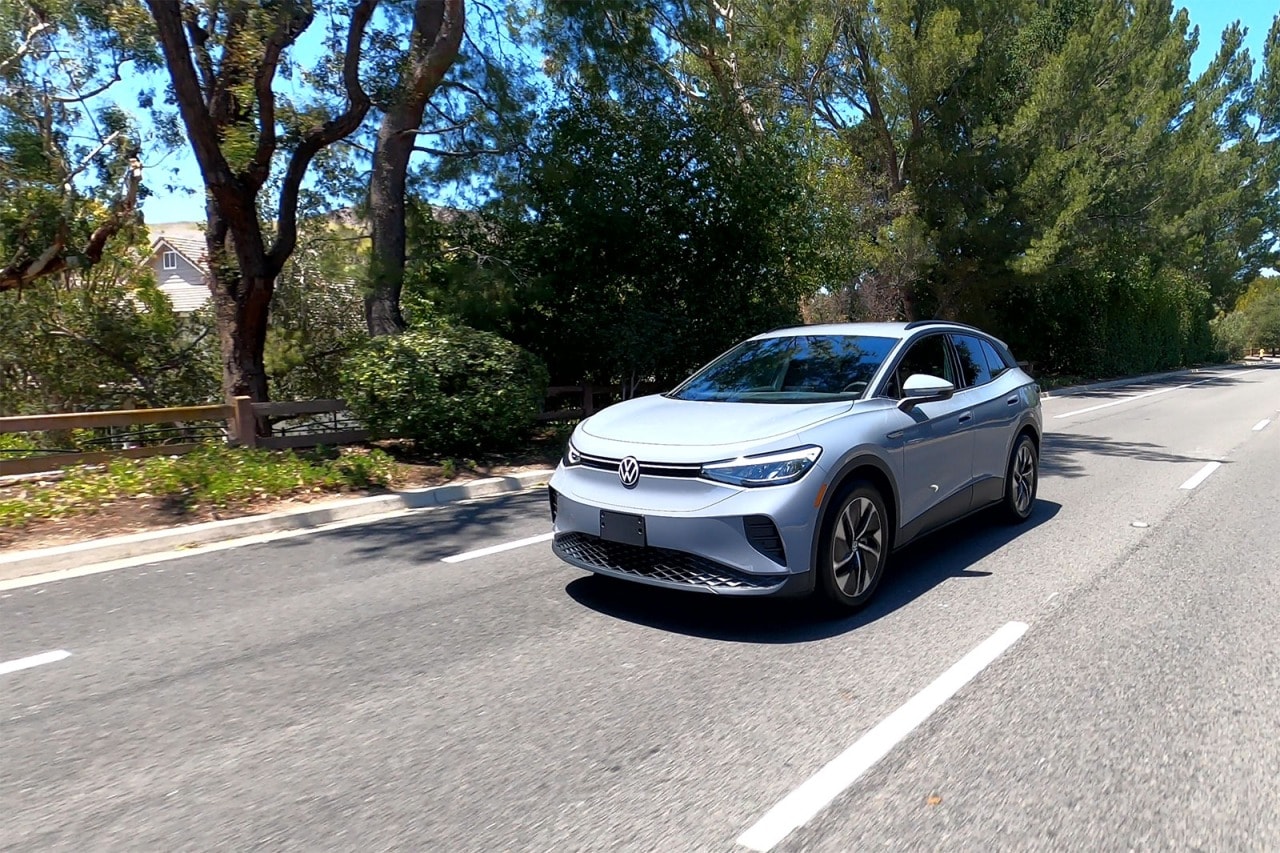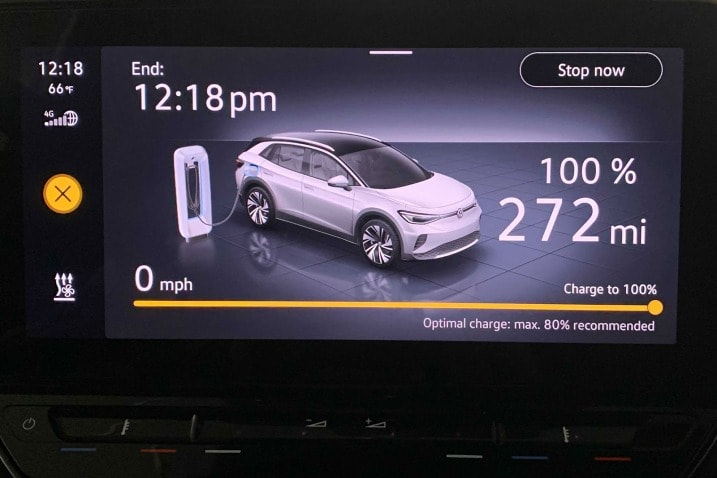- The 2021 ID.4 Pro outperformed its EPA-estimated range of 260 miles, covering 288 miles on Edmunds' real-world EV range loop
- That total puts the ID.4 Pro in 8th place overall on our EV range leaderboard and 2nd among non-luxury models to the Hyundai Kona Electric
- The ID.4 Pro only beat the regular ID.4 by 1 mile in our testing despite the Pro's 10-mile advantage per the EPA
- Edmunds' EV range leaderboard is embeddable and dynamic, meaning it will update in real time whenever we add a new electric vehicle
The 2021 Volkswagen ID.4 Pro has an EPA-estimated range of 260 miles on a single charge. As far as non-luxury EVs go, that's the longest EPA range on the market as of this writing, beating out the Chevrolet Bolt EV and Hyundai Kona Electric by 1 and 2 miles, respectively.
That said, it's still just an estimate. We wanted to see how the ID.4 Pro would perform on our standardized EV driving loop, especially after the ID.4 First Edition — EPA-rated for 250 miles — threw down a 287-mile performance in previous testing. With its supposedly lighter weight and smaller wheels and tires, would the ID.4 Pro go even farther? Here's what we found.
Testing the ID.4 Pro in the real world
Edmunds tests every new electric vehicle on the same real-world driving loop to see just how far it can travel from a full charge down to zero miles remaining. If you look at our EV Range Leaderboard, you'll see that most EVs have matched or exceeded their EPA range estimates in our testing. The ID.4 First Edition that we tested in March of 2021 outperformed its 250-mile range estimate by nearly 15%. With almost identical weather conditions (65 degrees F for the Pro versus 63 degrees F for the First Edition), we expected a similar result with the Pro.








 by
by